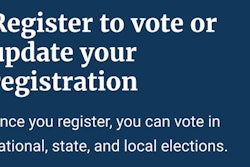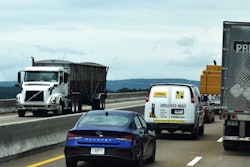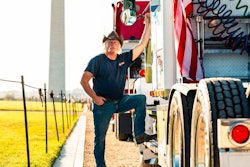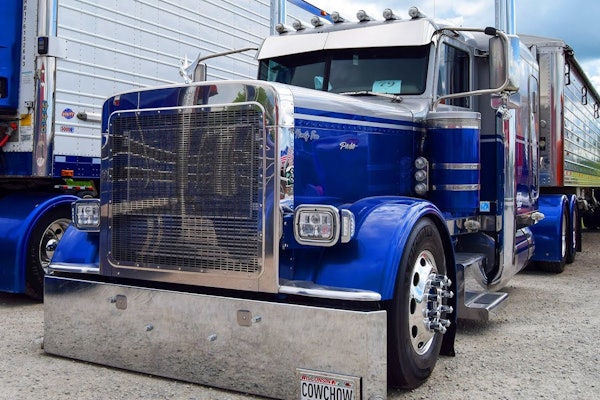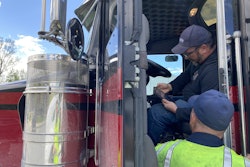Recently, a very experienced driver who has become a trusted member of a networking group I brought together contacted me privately to air out concerns regarding the possible safety risks at a customer’s location:
I have a tough delivery coming up. I know not to worry but I can’t understand how to get out without rolling the trailer. ... There is not enough room to turn a corner to go back up the hill to the gate. There is a guardrail on the right corner of the building, not enough room to get around the corner without snagging the guardrail.
To get around the guardrail, the the operator feared he'd have to swing wide, which would put him up a sizable embankment where he could easily roll the rig over.
Then he'd have to get back out, with its own challenges. His trailer was a "53-foot spread with a Volvo 860 tractor, low to the ground. I can get in," likely, he said. "But getting out could put me at risk. I’ve raised the alarms but so far, my employer is just ignoring my concerns."
A few days later, I had a conversation with the operator, who'd reached out to his company "requesting a conference call or a discussion on this delivery," he said. "I even asked about a driver manager that is located nearby that could meet me at the customer’s location on the day of the pickup to observe and teach me how to navigate this as the appointment is a week away.”
Sometimes, any of us could benefit through the simple act of sharing concerns. There’s likelihood your inner circle will not hold back their opinions, and truckers have no shortage of those, likewise their own stories not only of avoiding an accident, but when damage was done.

If we're honest, we can recognize our own bad decisions.
Take a moment periodically and just reflect on the tens of thousands of decisions made every day. There’s just no way perfection can be expected. Tune into your gut feelings and intuition -- they could be one of our most valuable tools. Fear is not to be ignored. It's one of the emotional motivations that naturally helps us protect ourselves.
I put the operator's predicament to the seasoned OTR veterans in the Truck Business Network group, asking for their thoughts and experiences. Below, a collection of just what these remote mentors, as it were, had to say.
Jerry Fritts: Newark, New Jersey. I had to deal with that when I was an independent contractor because there were hazardous materials on the property near where I was to back in. After the foreman and I argued, I got peeved and called 911 for the fire department to come. Soon, when the fire department showed up, even the executives come running out, finding the foreman completely red-faced and not such a tough guy.
The lead firefighter takes over, instructing the tough guy to clean up this yard, move several stacks of pallets, etc., while the executives are standing back watching. One of firefighters, who had been a truck driver, told me this place would soon get a complete hazmat inspection. After unloading, I called my contractor’s safety dept and was referred to claims. The director of claims said that if this ever happened again to call insurance claims, and they will handle the situation, which may include moving the load to a safe location determined by the trucking company.
I was told, “Do not call dispatch or operations. Call safety or insurance claims. Take pictures and forward to safety.”
I was a union owner-operator at that time, and I didn’t have to worry about losing my job for taking a stance regarding safety issues.
Clifford Petersen: Refuse to do it. Either they make safe accommodations, or it goes back to the shipper.
William Ponzo: It’s all about communication, and finding the safest way to do things you are comfortable with. I’m a lease driver, so I would send video/pics to my safety department with concerns. We are professionals, and expected to deliver to the stupidest of locations, but it’s all about comfort level. Move slow and steady and have spotters at all areas of concern and stop to get out and look yourself as well. You may have to negotiate the additional cost of moving freight off your truck onto a smaller one as an option.
Cliff Abbott: Ask the hard question -- “Is it unsafe or is it just challenging?” If it's unsafe, you're the captain of that 18-wheeled ship, so make the right decision and don't be intimidated. The people making demands won't be there to defend you if something happens.
Bill Ater: Many times, I have dealt with job-site situations where I'm told we will tow or push the truck and trailer in or out. I just say, "Nope, figure something else out." Yes, there is a factory tow pin, it's for looks. Not tearing my truck up off-road for anyone.
[Related: America's craziest interstate? Weigh in]
However we approach the situation, the fact is that, as Cliff Abbott also noted, "Challenging customer locations are high-risk!" Mitigating that risk is the fundamental responsibility of a small business trucker. Who owns the responsibility and liability should something happen? As Bill Ater suggested, like as not that's you.
If you're in the position of hiring and managing drivers, there could be very good return on your investment, furthermore, by educating employees and independent contractors alike, likewise office staff top to bottom, on their role in prevention of accidents.
Effective communication will help mitigate risks, as William Ponzo suggested.
- Make a habit of asking for a customer contact and phone number. If you can't get the information out of a broker or your own company, use the internet, including online map sites for the company location. Many times you’ll find a phone number. Confidently make the necessary calls, but have your load information in front of you. That will enable you to provide complete and accurate information and help everyone connect the dots.
- Study satellite images of any location likely to be a challenge. You can get street views for many, allowing you to see what the entrances look like, maybe even the corners you’ll have to turn, and so on. Doing this routinely will also reduce the risk of entering or exiting on routes that could be restricted, particularly for gross and bridge weights, width, length or hazardous commodities.
Everyone wants good customer service, so be proactive and find out what can -- nay, must -- be done together with the customer.
[Related: Parties other than carriers now subject to enforcement under the Coercion Rule]
When collaboration comes up short as coercion
Never accept coercion, when staff or managers use pressure and influence to try to push drivers into dangerous situations. So many of us see ourselves as the kind of person who will go the extra mile for people, most definitely for customers. It's likely we all know of a situation where a driver's caved to coercive pressure, possible learning very hard lessons if the damage done was irreversible.
Coercion of a truck driver to violate a regulation is prohibited in regulation today. As defined by the Federal Motor Carrier Safety Administration, it "occurs when a motor carrier, shipper, receiver, or transportation intermediary threatens to withhold work from, take employment action against, or punish a driver for refusing to operate in violation of certain provisions of the Federal Motor Carrier Safety Regulations (FMCSRs), Hazardous Materials Regulations (HMRs) and the Federal Motor Carrier Commercial Regulations (FMCCRs)."
[Related: Cracks in the System: Blowing the whistle on coercion]
It can be found "to have taken place even if a violation has not occurred," FMCSA's guidance continues. "An example of coercion is when a motor carrier terminates a driver for refusing to accept a load that would require the driver to violate the hours-of-service requirements." For violations of federal coercion prohibitions to have occurred, the driver has to be able to document that they recognize the task desired would in fact violate regulations and that they communicated that to the offending party. Then that party makes a threat or takes action "against the driver’s employment or work opportunities to get the driver to take the load despite the regulatory violation that would occur."
Being told by a shipper that every other driver just does what we say isn't going to protect you in the case of an accident or an injury. To quote Cliff Abbot again, you are indeed “the captain of that 18-wheeled ship," and it's your responsibility, ultimately, to make decisions that keep you and others safe. Developing a greater appreciation for prevention practices will add value over time by preventing claims and reducing costs lost to repairs, injuries, even losing a customer.
As I finished pulling this story together, I received a message from the driver who reached out for help initially. Turns out, they were able to slowly reverse their course once loaded, maneuvering the truck and trailer backward up a somewhat uncomfortable grade out of the location, then on to the highway to exit with a huge sigh of relief.
We might say all's well that ends well. Thanks to him for sharing the predicament. Maybe the discussion helps you stay safer down the road.
Find more on the FMCSA's 2016 Coercion Rule and how to recognize and report coercion instances in Overdrive's 2019 "Cracks in the System" series.
Find more about the FMCSA's Coercion Rule as well as safety and customer management in Overdrive and ATBS's coproduction of the annually updated "Partners in Business" book for new and established owner-operators, a comprehensive guide to running a small trucking business sponsored for 2024 by the Rush Truck Centers dealer network. Follow this link to download the most recent edition of Partners in Business free of charge.





